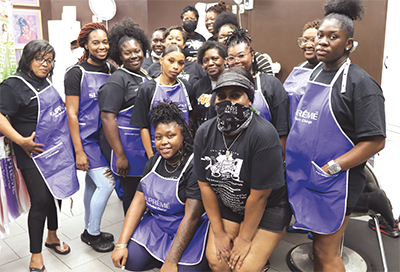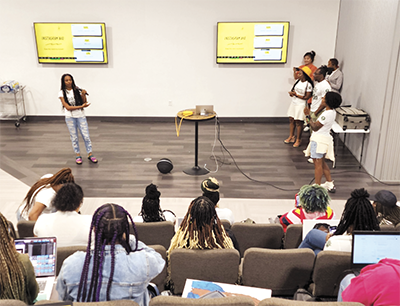Braiders Talk

For years, the braids industry has been booming. In addition to the popularity of bundle hairs, factory sellers moved into the market segment which has become a full category. Natural hair movement is also advancing. Curlfest, Essence Festival, Afropunk, and so on, the various festivals represent the rise of the natural hair movement, and Black women no longer hide their own hair with wigs or weaving hair. The decade old movement is making products for braids steadily popular among women who want easy and quick natural hairstyles.
Braiding products have surpassed the sales revenue of expensive human hair, and long and natural crochet braids are occupying the large portion of the retail floor. Just a few years ago, a girl was bullied at her school for wearing natural hair, and a Black woman was fired for being unprofessional citing her natural hair. These two incidents led to court cases and made many Americans confront the question: “why only calm and glowing hair is appropriate?” Then, many Americans’ sentiment about hair has changed.
Covid-19 and its impact on the availability of hair salon services also fueled the trend for DIY hair styling at home taught by YouTube videos and other tutorials. Many braids styles do not require sophisticated technique, so if you buy a pre-styled hair product, you can complete a hairstyle at relatively low cost, which led to the substantial increase of sales for beginner products including crochet braids.

The consumer’s increased consumption of the products led to high demand. Last year and early this year, Covid-19 was still spreading, and you must be very lucky to make an appointment with a braider. Braiders required advanced payment or deposit for 1-on-1 appointments and imposed penalties for late or no show. Many U.S. states do not treat braiders as hair stylists, so you may not require a license to practice exclusively braiding. No regulation exists solely for braiders who do not use chemicals and so on. In other words, you can become a braider relatively easily, and you can attract a continuous stream of customers as long as you have the skill. In fact, many braiders opened their business during Covid-19 pandemic, and new braider communities are popping up.
Last August, I attended a networking event for braiders to exchange information and socialize. It had workshops themed on customer care, online marketing, pricing for varying difficulty levels, and so on, featuring presentations and free talks. The participants ranged from a life-long braider to a novice braider who just entered the trade. I met a braider who is hugely popular locally but had no means to propagate the fandom online, but I also met some of the famous influencers who have many followers and corresponding skills documented in flavorful photos.
They talked about what you need to become a successful braider, how to deal with disappointed clients, promoting business without costing an arm and a leg, standing out among braiders, haircare knowledge for braiders, and the trendy loose braids.

In addition, there were many questions and answers as well as passionate discussions among them. Braiders were generally proud and optimistic about the recent braids boom and considered it a great opportunity. Many braiders achieved financial freedom during the boom, and quite a few of them were expanding their business while raising the next generation of braiders in-house.
Braiders who participated in the event are continuing various efforts to make positive impacts in their local areas. One of them is providing free hair services to children of low-income families in the back-to-school season. These children have little means to pay for expensive hairstyling, but they would often become an easy target of teasing and bullying at school. Undoubtedly, the free services were hugely popular. Braiders with personal experiences volunteered at events sponsored by hair product company Supreme and chemical company Arganic. It was an occasion to instill confidence among Black children from low-income families.
Through networking, braiders can make a louder voice in the local community as well as in the hair industry. A substantial portion of the beauty supply revenue is braiding products, and this is time to review your relationship with local braiders and their needs and respect them as not just customers but also as business partners.
